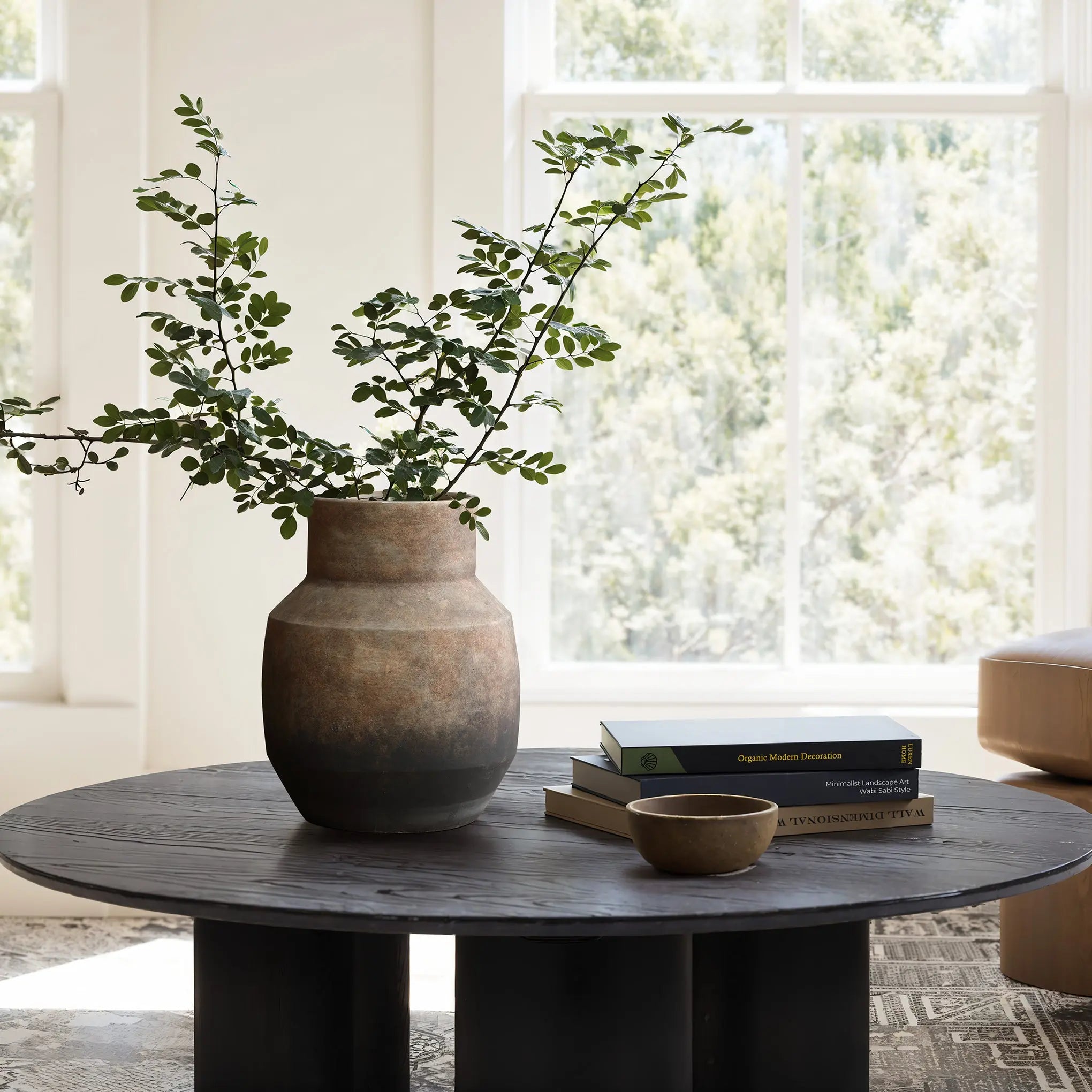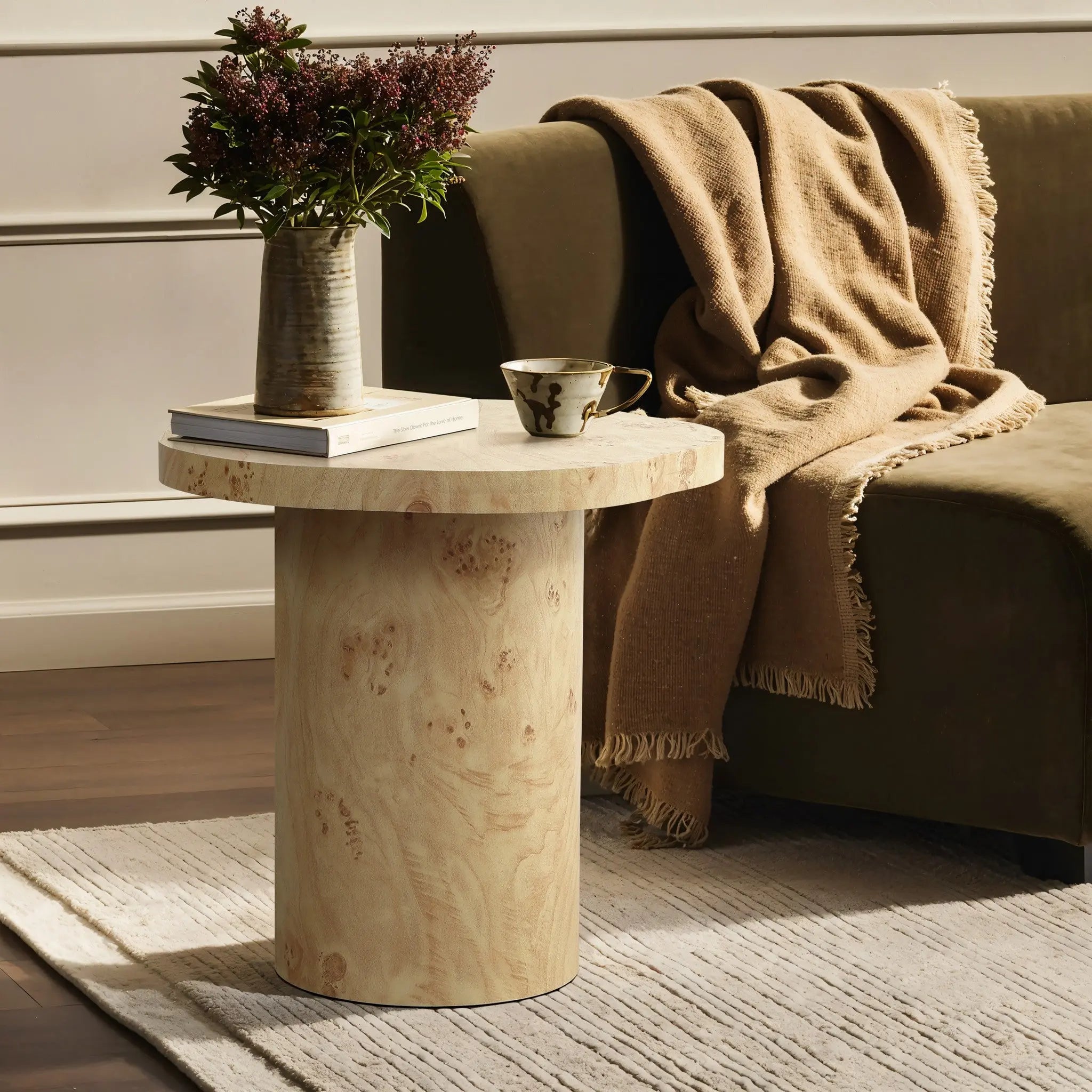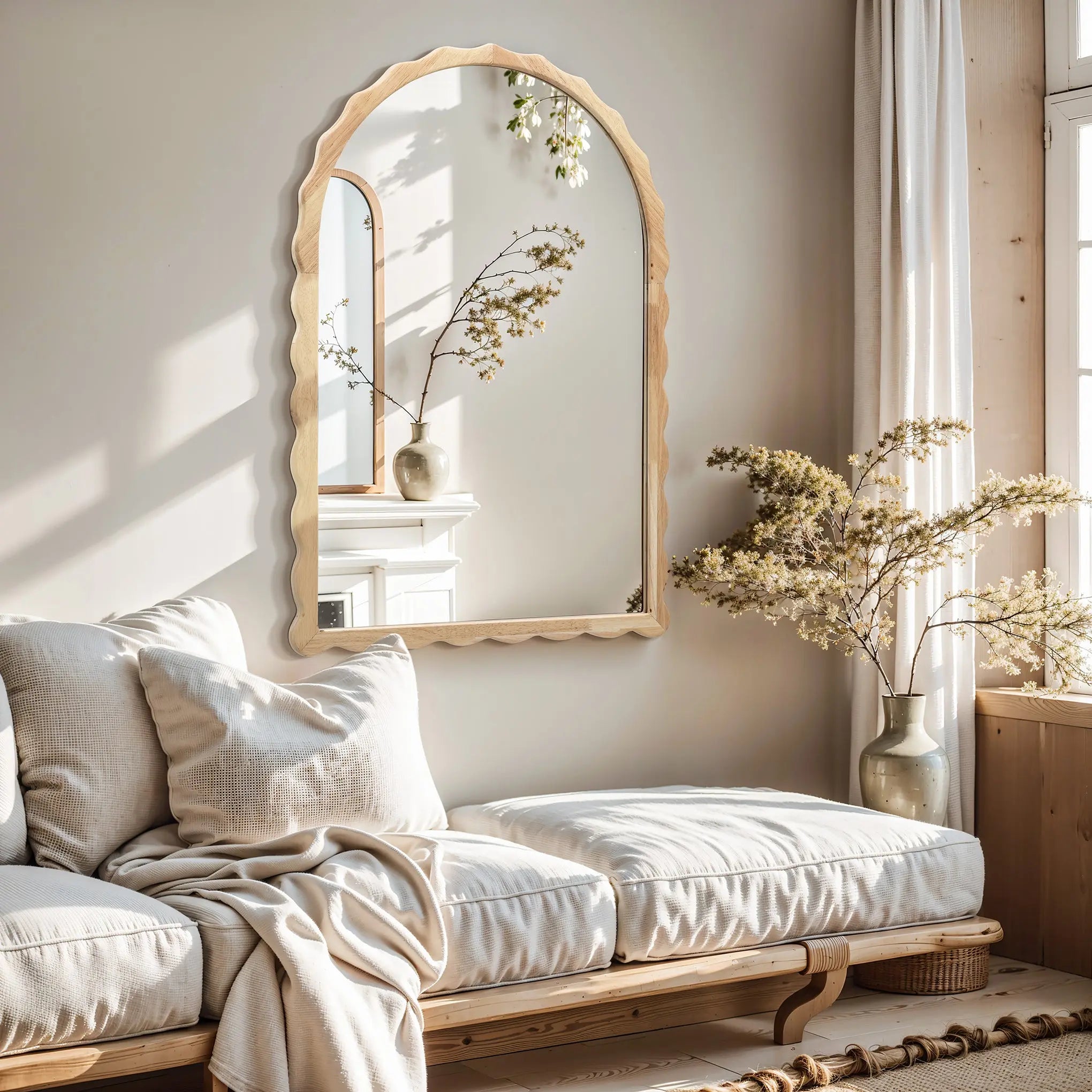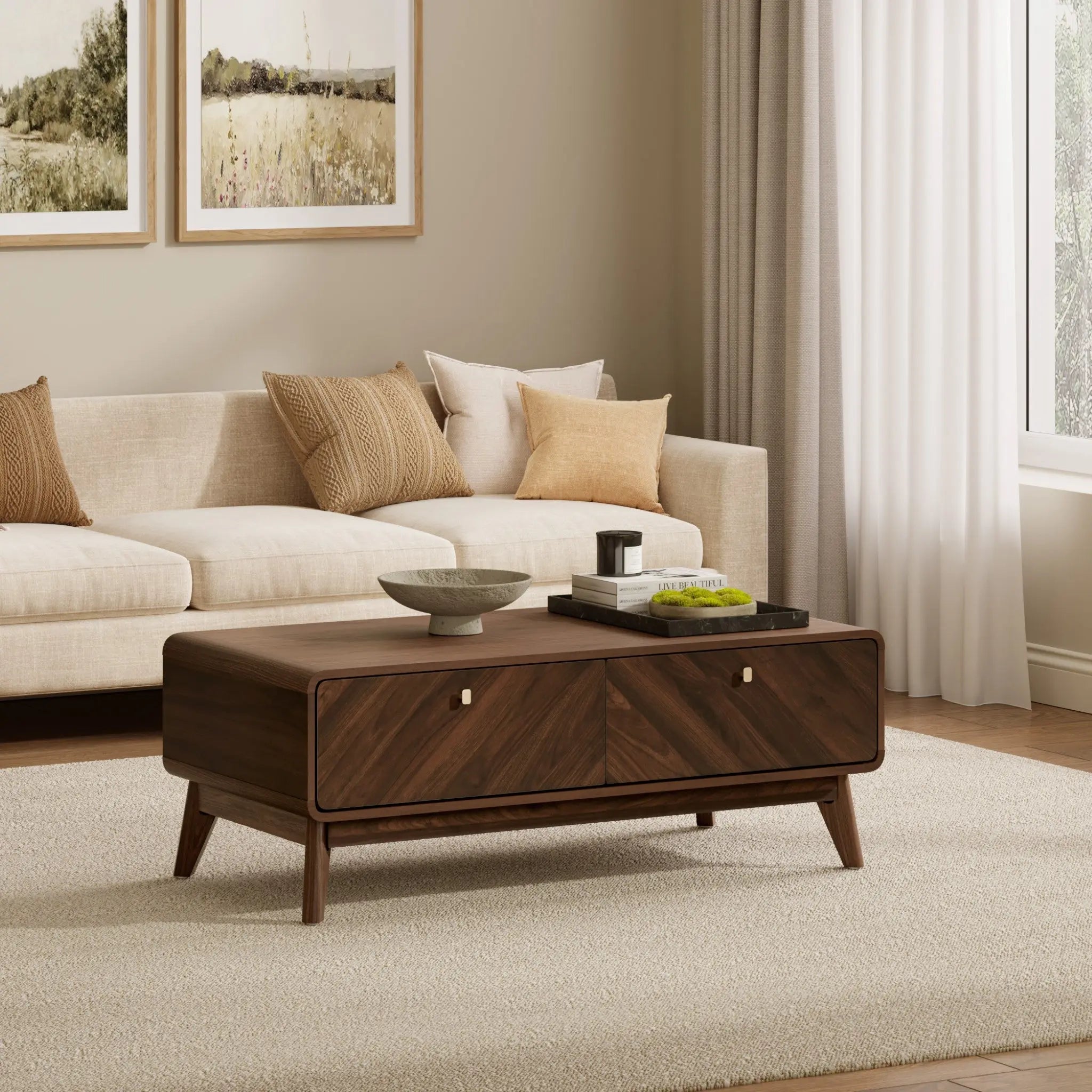Your living room is more than just a place to sit comfortably—it's where you unwind, entertain guests, and express your style. As the heart of your home, this living space deserves a fresh, organic touch. Whether you're looking to create space, warm up a modern layout, or add depth to a traditional room, bringing elements of the outdoors inside is a powerful way to refresh and reconnect. With the right blend of furniture, greenery, and thoughtful arrangement, you can transform your living room into a tranquil retreat—perfect for everyday life and meaningful moments with family and loved ones.
Define Your Style
Defining your personal style is the first step in creating a living room you love. Your living room should reflect your personality and taste, serving as a comfortable and inviting space where you can truly be yourself. Take some time to explore different decor styles, such as modern, traditional, rustic, or eclectic, and identify the one that resonates most with you.
Consider the existing furniture pieces you already own and love, and use them as a starting point to build your desired aesthetic. If you're starting from scratch, think about the colors, textures, and overall vibe that make you feel most at home.
To help visualize your dream living room, create a mood board by gathering images from magazines, online sources, or even your own photographs. This mood board will serve as a visual roadmap, guiding you through the design process and ensuring that every element you introduce aligns with your desired style.

Plan the Layout
Before you start rearranging furniture or making purchases, take the time to plan the layout of your living room. Measure the room dimensions accurately, including any nooks, alcoves, or protrusions. Identify the focal points of the space, such as a fireplace, large window, or where you plan to place the TV. Arrange furniture in a way that facilitates functionality and flow, ensuring there are clear pathways for movement. Consider the primary activities that will take place in the room, such as entertaining guests, watching movies, or reading, and position furniture accordingly.
Create a rough floor plan sketch, experimenting with different furniture arrangements until you find a layout that feels balanced and inviting. Ensure there is ample space for traffic flow and that seating areas are positioned for comfortable conversation or viewing. Don't forget to account for the placement of larger pieces like sofas, chairs, and entertainment units, as well as smaller elements like side tables and lamps. With a well-planned layout, your living room will be both functional and visually appealing.
Choose a Color Scheme
Selecting a cohesive color scheme is crucial for creating a harmonious and inviting living room. Start by considering the colors you naturally gravitate towards – these are likely to bring you joy and a sense of calm. Neutral tones like beiges, grays, and whites provide a versatile foundation, allowing you to introduce pops of bolder accent colors through accessories and decor.
When choosing your color palette, it's essential to factor in the room's lighting. Natural light can significantly impact how colors appear, so observe the space throughout the day to understand how the hues shift. Cooler tones like blues and greens tend to create a serene atmosphere, while warmer shades like reds and oranges evoke energy and vibrancy.
Don't be afraid to incorporate colors that you genuinely love – after all, your living room should be a reflection of your personal style. Whether you prefer vibrant jewel tones or muted earth tones, embrace the shades that resonate with you and make you feel at home. A well-curated color scheme can transform your living room into a welcoming oasis tailored to your tastes.
Invest in Key Pieces
When it comes to creating a living room you truly love, investing in key pieces is essential. These are the items that will anchor the space and serve as functional and stylistic foundations. Start by splurging on high-quality, comfortable seating, such as a well-crafted sofa and armchairs. Look for pieces with sturdy frames, supportive cushions, and fabrics that can withstand daily use.
Next, select durable coffee and end tables that not only complement your seating but also provide ample surface space for drinks, books, and decorative accents. Consider materials like solid wood, glass, or metal that can withstand wear and tear while adding visual interest.
While splurging on these central elements, you can balance the budget by mixing in more affordable accent pieces. Opt for versatile side chairs, ottomans, or poufs that can be easily moved around to accommodate different seating arrangements or provide extra seating when entertaining. These pieces allow you to experiment with different textures, patterns, and colors without breaking the bank.
By investing in high-quality, comfortable seating and durable tables, and balancing with more affordable accent pieces, you'll create a living room that not only looks inviting but also stands the test of time.

Add Personality with Decor
Artwork, mirrors, and greenery can instantly infuse your living room with character and life. Carefully curated pieces not only add visual interest but also reflect your personal taste and style. Hang a statement mirror above the fireplace or a gallery wall showcasing your favorite metal wall art. Lush indoor plants breathe vitality into the space while purifying the air.
Personal mementos and collections are a great way to tell your unique story. Display treasured souvenirs from your travels, family heirlooms, or a curated collection of objects that hold sentimental value. Arrange them artfully on bookshelves, mantels, or dedicated shelving units.
Texture and pattern are essential elements in creating a cozy and inviting living room. Layer patterned throw pillows on your sofa or armchairs, incorporating different textures like velvet, knits, or embroidery. Drape a chunky woven blanket over the arm of your couch, inviting you to snuggle up and unwind.
Create Cozy Zones
Creating cozy zones within your living room is essential for fostering a warm and inviting atmosphere. By designating specific areas for different activities, you can enhance functionality and ensure that your space meets all your needs.
One approach is to carve out a dedicated reading nook. Position a cozy armchair or loveseat near a window, allowing natural light to flood the area. Complement the seating with a floor lamp or a table lamp, providing ample illumination for your reading sessions. An area rug can help define the boundaries of this cozy retreat, creating a sense of intimacy.
Another option is to establish a conversation pit, a sunken seating area designed for socializing and relaxation. This inviting space encourages casual gatherings and fosters a sense of togetherness. Arrange comfortable sofas or plush floor cushions around a coffee table, creating an intimate setting for engaging conversations or enjoying a movie night with friends.
Strategically placed area rugs can work wonders in delineating these cozy zones. Choose rugs with textures and patterns that complement your overall design aesthetic, adding warmth and visual interest to the space. Layering rugs can also create depth and dimension, further enhancing the coziness factor.
Finally, ensure that each designated zone is equipped with ample lighting. Incorporate task lighting, such as floor lamps or table lamps, to provide focused illumination for activities like reading or working. Ambient lighting, like wall sconces or recessed lighting, can create a warm and inviting ambiance throughout the living room.
By thoughtfully creating cozy zones within your living room, you'll not only maximize functionality but also cultivate a space that invites relaxation, comfort, and cherished moments with loved ones.

Incorporate Storage Solutions
Clutter can quickly make a living room feel cramped and uninviting. Incorporating smart storage solutions not only helps keep the space organized but also adds visual interest and functionality. Consider adding closed and open shelving units to display books, artwork, and decorative pieces while concealing less attractive items. Ottomans and trunks with hidden storage compartments are versatile pieces that can serve as extra seating while providing discreet storage for blankets, games, or media accessories.
For a seamless and built-in look, consider incorporating custom cabinetry or bookcases into your living room design. These can be tailored to fit your specific needs and maximize every inch of space. Open shelving units are also a great way to showcase your favorite decor items while keeping the room feeling airy and spacious. Remember to strike a balance between closed and open storage to maintain a curated yet functional aesthetic.

Accessorize Thoughtfully
The accessories you choose to display in your living room should be an extension of your personal style and interests. Curate a selection of decor pieces that tell your story and reflect your passions, whether it's a collection of pottery from your travels, framed artwork from local artists, or treasured family heirlooms.
When arranging accessories, group items by color, theme, or material for a cohesive and visually appealing display. Avoid cluttering surfaces with too many knick-knacks, as this can create a chaotic and overwhelming atmosphere. Instead, focus on a few carefully chosen pieces that complement your overall design aesthetic.
Consider incorporating natural elements, such as plants, flowers, or unique rocks, to bring a sense of warmth and vitality to the space. Rotate your accessories seasonally or as your interests evolve, allowing your living room to remain a dynamic and ever-changing reflection of your personality.
FAQs
Q1. How do I scale living room furniture in a small space?
A: Use a tape measure to chart your layout, then introduce floating furniture like slim sofas and floating shelves to create space and maintain an inviting flow.
Q2. What’s the best way to make my living room stylish on a budget?
A: Browse affordable living room sets with clean lines in neutral colors, shop seasonal deals at your local store, and prioritize key items—like a cozy sofa, area rug, and a few lush plants—for maximum impact at minimal price.
Q3. How can I blend indoor plants with traditional and modern décor?
A: Start with a focal point, such as a grouping of plants beside your fireplace or TV. Choose sleek planters to echo your modern aesthetic, and mix in rustic or vintage pots for traditional charm. Use rugs, tables, and furniture to tie everything together for a seamless look.

Leave a comment